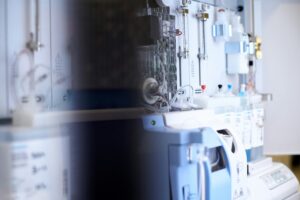High-performance liquid chromatography (HPLC) is a powerful analytical technique used in chemistry and biochemistry to separate and identify compounds in complex mixtures. However, like any analytical method, HPLC has its limitations. In this article, we will discuss some of the most significant limitations of HPLC and how they can be overcome.
- Sample size: One of the main limitations of HPLC is the sample size required. Typically, a few microliters of sample are needed for analysis, which can be a problem for samples that are limited or expensive. However, sample size can be increased by using sample concentrators or by increasing the sensitivity of the detector.
- Resolution: HPLC is a technique that separates components in a mixture based on their physical and chemical properties. While HPLC can provide high resolution, it can be difficult to achieve complete separation of all the components in a complex mixture. In these cases, alternative techniques such as gas chromatography (GC) or mass spectrometry (MS) or our solutions with GC-UV is to be more appropriate.
- Detection limit: The detection limit of HPLC is another limitation, as it is not as sensitive as other analytical techniques such as GC or UV.
- Column lifetime: HPLC columns are consumable items, which means that they need to be replaced periodically. The lifetime of a column depends on the type of column, the sample matrix, and the sample conditions. Column lifetime can be extended by using proper column care, such as cleaning and storage, but this requires additional time and effort.
- Cost: HPLC are an expensive technique, as it requires specialized equipment and columns. In addition, the cost of columns and other consumable items can add up over time. This can make HPLC less accessible for researchers with limited budgets.
High-performance liquid chromatography (HPLC) is a method of separating and analyzing compounds in a mixture. It is a type of liquid chromatography, which is a technique that separates components of a mixture based on their relative affinity for a stationary phase (e.g. a solid or gel) and a mobile phase (e.g. a liquid or gas). In HPLC, a sample is injected into a column that contains a stationary phase, and a mobile phase (usually a liquid) is used to elute (push) the components of the sample out of the column. The different components of the sample are separated based on their interactions with the stationary phase, and they are then detected and quantified as they elute from the column.
HPLC is widely used in analytical chemistry, biochemistry, and pharmaceuticals to identify, quantify and purify the individual components of a mixture. It can be used to analyze a wide range of compounds, including drugs, proteins, hormones, vitamins, and pesticides.
How long does a HPLC measurement take?
The duration of a High-performance liquid chromatography (HPLC) measurement can vary depending on several factors such as:
- The complexity of the sample: A sample with many components will take longer to separate and analyze than a sample with fewer components.
- The type of column and stationary phase: Different columns and stationary phases have different separation characteristics and can take longer or shorter to separate the components of a sample.
- The flow rate of the mobile phase: A higher flow rate will result in a faster elution of the sample components, but can also reduce the resolution of the analysis.
- The detection method: Different detection methods have different response times and can affect the overall duration of the measurement.
- The amount of sample used: The amount of sample used will also affect the duration of the measurement.
As a general rule, HPLC measurement typically takes between 15 minutes to several hours, depending on the complexity of the sample and the specific conditions of the analysis.

What is the differences between GC and HPLC?
Gas chromatography and high-performance liquid chromatography (HPLC) are both analytical techniques used to separate and identify compounds in a mixture. However, there are some key differences between the two methods:
- Mobile phase: In GC, the mobile phase is a gas (usually helium), while in HPLC, the mobile phase is a liquid.
- Column type: GC-MS as an example uses a column filled with a stationary phase in the form of a solid or liquid coating on an inert solid support, while HPLC uses a column filled with a stationary phase in the form of a solid or gel.
- Sample preparation: GC-MS requires that the sample be volatile and thermal stable, while HPLC can handle both volatile and non-volatile samples.
- Detection method: GC-MS uses mass spectrometry to detect and identify compounds, while HPLC uses a variety of detection methods such as UV-Vis, Fluorescence, and Refractive Index.
- Separation mechanism: GC-MS separates compounds based on their volatility and polarity, while HPLC separates compounds based on their polarity and size.
- Applications: GC-MS is particularly useful for the analysis of volatile compounds, such as those found in environmental and forensic samples, while HPLC is widely used in the pharmaceutical, biochemistry, and food industry for the analysis of non-volatile compounds.
In summary, GC-MS and HPLC are complementary techniques, each with its own advantages and limitations, and they are often used together in different analytical scenarios.




